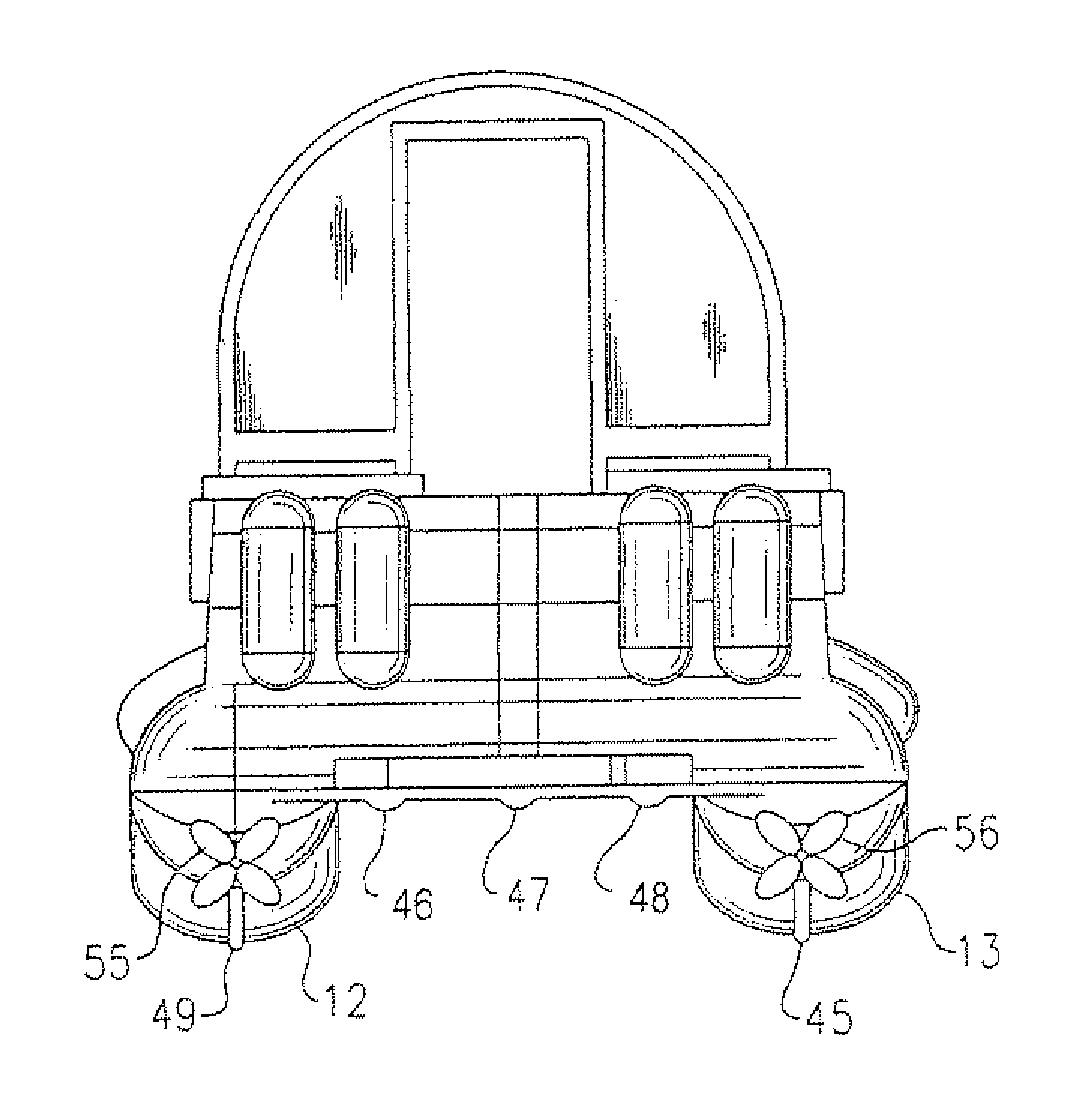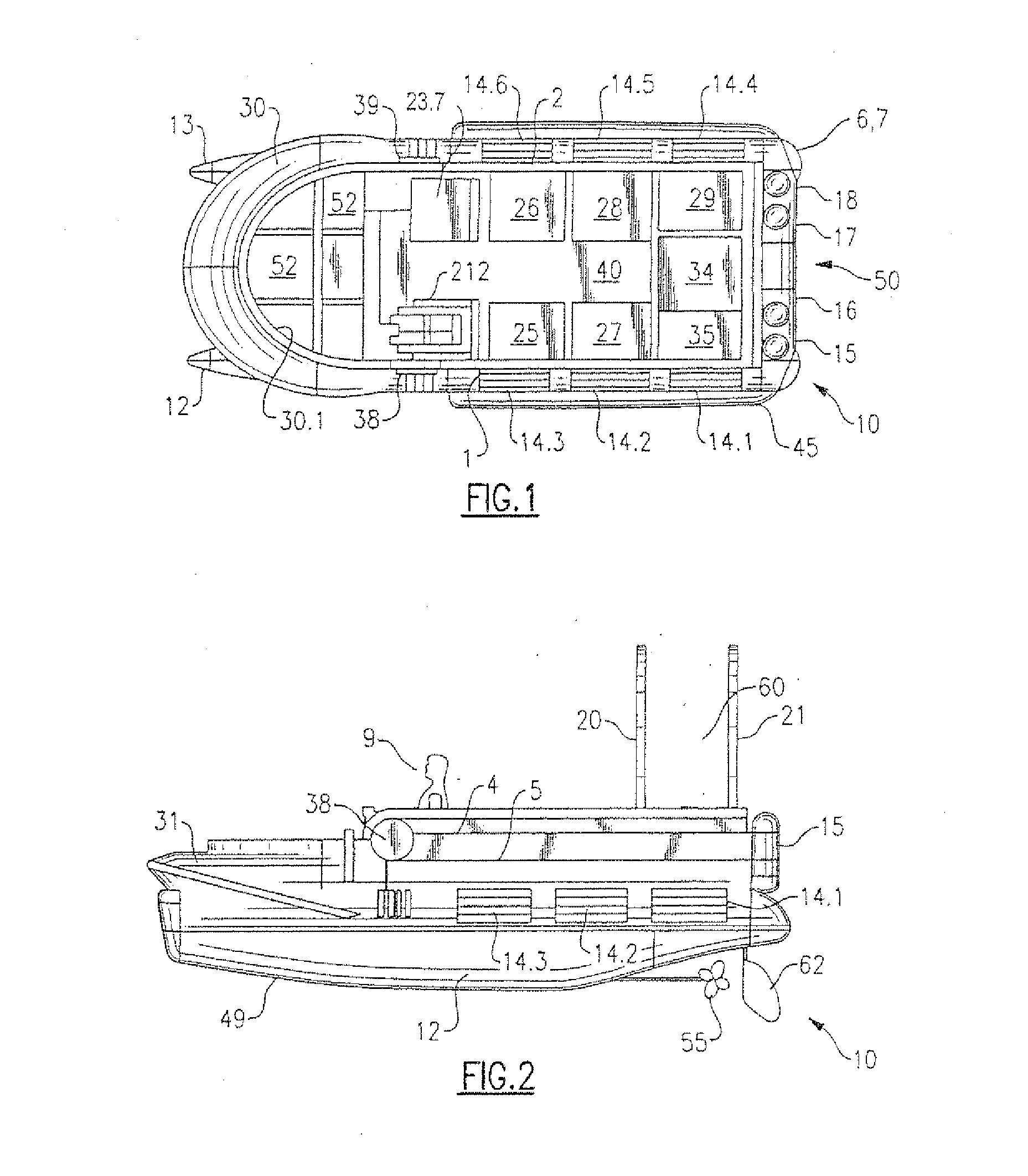Docking and steering system
a steering system and steering wheel technology, applied in the field of recreational vehicles, can solve problems such as inability to adjust, compromise is sometimes necessary, and affects the performance of the unit,
- Summary
- Abstract
- Description
- Claims
- Application Information
AI Technical Summary
Problems solved by technology
Method used
Image
Examples
Embodiment Construction
[0030] A boat camper 10 having the features of the invention will first be described with reference to FIGS. 1-6. The boat camper 10 has a catamaran-type hull with port and starboard pontoons 1.2, 13 connected together by a bridge 44. The pontoons 12, 13 and bridge 44 are made of any suitable marine material. They may be fiberglass, plastic, resin, composite, or suitable marine material. Rubber foot supports 14.1-14.6 on each pontoon provide a user with a slip resistant foot hold. The bow 30 of the vessel has a raised portion 31 that curves around the forward part of the vessel to provide a break against bow waves. Each pontoon has a fin 45, 49 and the bridge 44 has three fins 46, 47, 48 to help break the water as the vessel moves forward. A pair of rails 4, 5 on the port side and a corresponding pair of rails on the starboard side provide hand grips for passengers and also storage racks for extra equipment, such as bicycles, or other recreational equipment. The rails curve around t...
PUM
| Property | Measurement | Unit |
|---|---|---|
| width | aaaaa | aaaaa |
| width | aaaaa | aaaaa |
| length | aaaaa | aaaaa |
Abstract
Description
Claims
Application Information
 Login to View More
Login to View More - R&D
- Intellectual Property
- Life Sciences
- Materials
- Tech Scout
- Unparalleled Data Quality
- Higher Quality Content
- 60% Fewer Hallucinations
Browse by: Latest US Patents, China's latest patents, Technical Efficacy Thesaurus, Application Domain, Technology Topic, Popular Technical Reports.
© 2025 PatSnap. All rights reserved.Legal|Privacy policy|Modern Slavery Act Transparency Statement|Sitemap|About US| Contact US: help@patsnap.com



